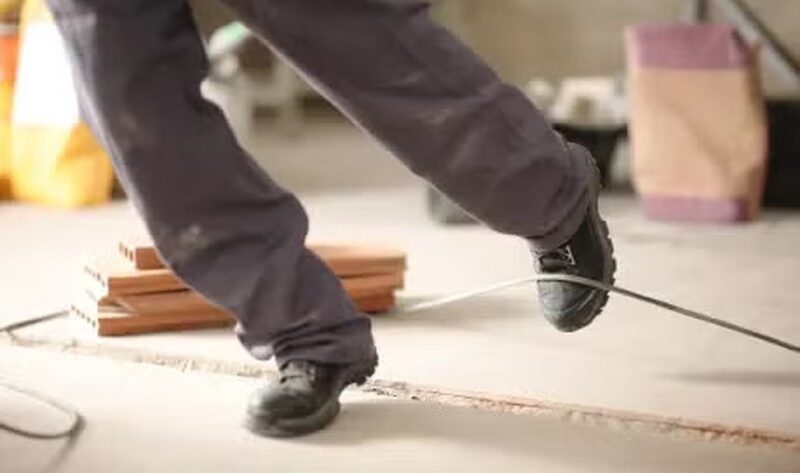Slip and fall accidents in Florida often appear to be sudden, isolated events, but a deeper examination reveals a pattern rooted in systemic policy failures. These failures occur long before a customer steps onto a wet floor or encounters a poorly maintained walkway. They emerge from management decisions, staffing limitations, inadequate training, insufficient oversight, and cost-cutting measures that quietly erode safety standards. Attorneys at Chalik and Chalik, who represent injured individuals exclusively, regularly uncover these hidden policy breakdowns when building strong premises liability claims under Florida law.
Safety policies are meant to function as the backbone of a business’s risk management system. Yet many Florida businesses adopt policies that look impressive on paper but fail in practice. For example, a supermarket may claim to conduct aisle inspections every 30 minutes, but closer review of logs may reveal identical entries made without actual inspection. This discrepancy between stated policy and real-world execution becomes a critical issue in slip and fall litigation. In cases involving major retailers, including discussions surrounding Publix slip and fall claims, courts often evaluate whether safety policies were followed or merely displayed as formalities.
Another significant policy failure involves understaffing. While Florida’s busiest stores may generate heavy foot traffic, staffing levels often fail to match operational needs. Employees tasked with stocking, customer service, and checkout responsibilities are frequently the same individuals expected to monitor for hazards. When staff are stretched thin, safety protocols become secondary. This creates long gaps during which spills, debris, or condensation remain undetected. Failure to allocate adequate personnel to high-risk areas becomes a policy failing—not merely an employee oversight.
Additionally, many businesses adopt reactive rather than proactive policies. Instead of implementing continuous monitoring in hazard-prone sections—such as produce aisles, freezer rows, or entryways during Florida rainstorms—businesses often respond only after a hazard becomes obvious. This reactive approach conflicts directly with Florida premises liability law, which requires businesses to anticipate foreseeable risks. High-moisture areas are predictable and require heightened attention, yet inadequate policies frequently leave them unmonitored. This pattern appears clearly in litigation involving national chains, especially documented trends in Walmart slip and fall cases, where recurring environmental hazards highlight a lack of proactive safety planning.
Training gaps represent another policy weakness. Businesses may provide brief orientations or generic safety briefings but fail to teach employees how to identify hazards specific to the environment. For example, produce department workers must understand the risks of misting systems, while those near refrigerated areas must recognize condensation patterns. Without training that addresses these unique hazards, employees cannot reasonably perform hazard identification duties. A policy that emphasizes speed and efficiency over safety awareness ultimately leads to unsafe conditions.
Maintenance policies also play a central role. Flooring materials should be evaluated not only for aesthetic appeal but also for safety performance. Some Florida businesses select surfaces that become dangerously slick when wet, yet do not adopt policies requiring frequent traction testing or slip resistance monitoring. Furthermore, policy failures often occur when businesses neglect routine maintenance, such as replacing worn mats, repairing uneven tiles, or sealing damaged flooring. When floor maintenance is deferred, hazards become embedded in the environment, increasing the likelihood of an accident.
Weather-related policies are another area where failing to adapt leads to injury. Florida’s rapid rainfall and high humidity create predictable conditions for moisture buildup at entrances. Businesses should implement policies requiring continuous monitoring during storms, quick deployment of absorbent mats, and prompt placement of warning signs. When these policies are absent or inconsistently applied, customers entering the building remain unaware of the increased risk. Courts frequently examine whether businesses had weather-specific procedures and whether they adjusted staffing or cleaning frequency accordingly.
Documentation policies often reveal deeper systemic issues. Inadequate incident reports, incomplete inspection logs, and inconsistent hazard documentation undermine a business’s credibility. Courts scrutinize whether logs were completed at realistic times, whether reports include specific details, and whether documentation aligns with surveillance footage. When documentation appears inconsistent or incomplete, it suggests poor policy enforcement. This lack of reliable record-keeping often works against the business because it indicates broader failures in safety management.
Another subtle but important policy failure involves the distribution and availability of safety equipment. Warning signs may be in short supply, stored in distant stockrooms, or placed inconsistently. Spill kits may be missing, incomplete, or unused. Without policies ensuring that equipment is accessible and routinely checked, employees lack the tools needed to respond quickly to hazards. These equipment-related gaps show that safety was not prioritized at the institutional level.
The final policy-related issue lies in the culture of the business. A company may have all the necessary safety protocols written down, but if management does not emphasize compliance or hold employees accountable, policies lose their effectiveness. Safety requires reinforcement, consistent reminders, and leadership commitment. When management focuses primarily on productivity, sales, or customer flow, safety becomes secondary. This cultural failure often manifests in closed-case reviews, where investigators discover that employees felt too rushed or unsupported to enforce safety policies properly.
When slip and fall accidents occur in Florida, the cause is rarely a mystery. Behind every hazard, there is usually a policy failure—whether in training, staffing, maintenance, communication, or enforcement. By examining these systemic issues, attorneys at Chalik and Chalik build comprehensive cases that reveal how preventable the injuries truly were. Understanding these failures empowers injured individuals to seek accountability and reinforces the fundamental principle that safety must be embedded into every layer of a business’s operations.





